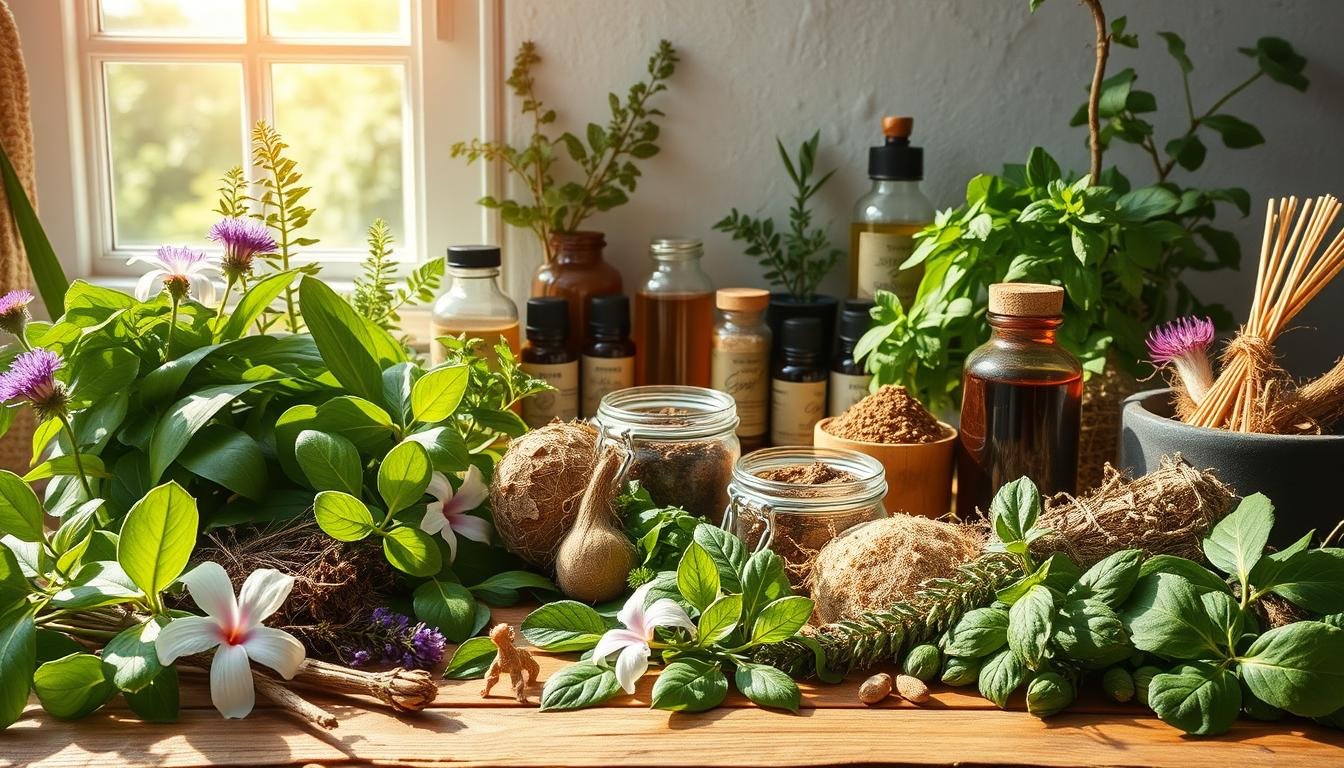Can simple mindfulness practices really calm the storm of anxiety and stress that often overwhelms us? In today’s fast-paced world, finding peace and tranquility is more challenging than ever.
Mindfulness and meditation have emerged as powerful tools for achieving anxiety relief and stress reduction, promoting overall mental wellness.
By incorporating these practices into daily life, individuals can better navigate the pressures of modern living, leading to a more balanced and fulfilling existence.
Key Takeaways
- Simple mindfulness practices can reduce anxiety and stress.
- Mindfulness and meditation promote mental wellness.
- Incorporating mindfulness into daily routines can lead to a more balanced life.
- Mindfulness techniques are accessible and easy to practice.
- Regular mindfulness practice can improve overall well-being.
Understanding Mindfulness and Its Benefits
At its core, mindfulness is about cultivating awareness of the present moment, free from judgment. This practice involves paying attention to thoughts, feelings, and sensations without getting caught up in them.
What is Mindfulness?
Mindfulness is a practice rooted in Buddhist meditation, but it has been secularized and adapted for modern use. It involves being fully engaged in the current moment, observing experiences as they arise, and letting go of distractions.
Mindfulness practices can include a variety of techniques such as meditation, deep breathing, and mindful movement. These practices help individuals develop a greater awareness of their thoughts, emotions, and bodily sensations.
“The present moment is the only moment available to us, and it is the door to all moments.” – Thich Nhat Hanh
The Science Behind Mindfulness and Anxiety
Research has shown that mindfulness techniques can have a positive impact on anxiety by reducing the production of stress hormones like cortisol. Regular mindfulness practice has been linked to decreased activity in the amygdala, the part of the brain responsible for the fight-or-flight response.
- Mindfulness meditation can decrease the production of stress hormones.
- Regular practice can lead to changes in the brain’s structure and function.
- Mindfulness has been shown to reduce symptoms of anxiety and depression.
How Mindfulness Can Improve Mental Wellness
Incorporating meditation benefits and mindfulness practices into daily life can lead to improved mental wellness. By reducing stress and anxiety, individuals can enhance their overall quality of life.
Some mental wellness tips include starting the day with mindfulness meditation, practicing deep breathing exercises, and engaging in mindful walking or other physical activities. Consistency is key to experiencing the benefits of mindfulness.
Effective Meditation Practices for Beginners
For those new to meditation, the journey begins with simple, guided practices that can lead to significant reductions in stress and anxiety. Meditation is a versatile tool that can be adapted to suit individual needs and lifestyles.
Guided Meditation for Anxiety Relief
Guided meditation is an excellent starting point for beginners. It involves following a gentle, guiding voice that leads you through a meditation practice, often focusing on anxiety relief techniques and relaxation. This can be particularly helpful for those who find it challenging to meditate on their own or need help staying focused.
To get started with guided meditation, you can find numerous resources online, including apps and videos that offer a variety of sessions tailored to different needs, such as stress reduction, sleep improvement, or emotional balance.
Mindfulness Meditation Techniques
Mindfulness meditation is another powerful practice that involves paying attention to the present moment in a non-judgmental way. It encourages you to observe your thoughts, feelings, and bodily sensations without getting caught up in them. This can lead to a greater sense of calm and clarity.
Some effective mindfulness exercises include focusing on the breath, body scan meditation, and walking meditation. These practices help cultivate mindfulness in daily life, making it easier to manage stress and anxiety.
Tips for Creating a Daily Meditation Routine
Establishing a daily meditation routine can be challenging, but it’s essential for experiencing the long-term benefits of meditation. Here are some tips to help you get started:
- Start small: Begin with short sessions, even just a few minutes a day, and gradually increase the duration as you become more comfortable with the practice.
- Be consistent: Try to meditate at the same time each day to make it a habit.
- Find a quiet space: Identify a quiet, comfortable spot where you can meditate without distractions.
- Use technology: Take advantage of meditation apps and online resources to guide your practice.
By incorporating meditation into your daily routine, you can develop a powerful tool for managing anxiety and enhancing overall well-being.
Breathing Techniques to Calm the Mind
By incorporating specific breathing methods into your daily routine, you can better manage stress and anxiety. Breathing techniques are simple yet powerful tools that can calm the mind and promote relaxation.
Deep Breathing Exercises
Deep breathing exercises involve taking slow, deep breaths through the nose, holding the breath for a few seconds, and then exhaling slowly through the mouth. This technique helps slow down your heart rate and promote relaxation.
To practice deep breathing, find a comfortable seated position, place one hand on your belly and the other on your chest. Inhale deeply through your nose, allowing your belly to rise as your diaphragm descends. Your chest should not move. Hold your breath for a count of four, and then exhale slowly through your mouth.
Box Breathing for Stress Reduction
Box breathing, also known as square breathing, is a technique that involves breathing in for a count of four, holding for a count of four, exhaling for a count of four, and holding again for a count of four. This creates a “box” shape with your breath.
Box breathing can help reduce stress and improve focus by regulating your breathing and calming your nervous system. It’s a simple yet effective technique that can be practiced anywhere, making it a valuable tool for managing stress on the go.
Using Breath Focus for Mindfulness
Using your breath as a focus point is a fundamental mindfulness technique. By concentrating on your breath, you can anchor yourself in the present moment and let go of distracting thoughts.
To practice breath focus, sit comfortably with your eyes closed and bring your attention to your breath. Notice the sensation of the air entering and leaving your nostrils. When your mind wanders, gently bring your focus back to your breath without judgment.
Regular practice of these breathing techniques can lead to significant reductions in stress and anxiety, promoting overall mental well-being.
Incorporating Mindfulness into Daily Life
Mindfulness is not just a practice, but a way of living that can be integrated into daily activities. By incorporating mindfulness into our daily routines, we can enhance our mental wellness and reduce stress.
Mindful Walking and Movement
Mindful walking is a powerful practice that combines physical movement with a mindful attitude. It involves paying attention to the sensation of each step, the movement of your legs, and the rhythm of your breath. This practice can transform a routine walk into a meditative experience.
To practice mindful walking, start by finding a quiet, safe place to walk. Pay attention to your posture and the sensation of your feet touching the ground. Notice the surroundings, but avoid getting caught up in thoughts about them. Simply observe your experience as you walk.
Practicing Mindfulness During Meals
Eating is a fundamental part of our daily lives, and it can be a mindfulness practice. Mindful eating involves savoring each bite, paying attention to the flavors, textures, and aromas of the food. It encourages a healthier relationship with food and can enhance the dining experience.
To eat mindfully, start by eliminating distractions during meals, such as turning off the TV or putting away your phone. Chew slowly and focus on the taste and sensation of the food in your mouth. Notice the colors, smells, and presentation of the meal.
Mindful Listening Techniques
Mindful listening is the practice of fully concentrating on what the other person is saying, without interrupting or judging. It’s about being present in the conversation and understanding the other person’s perspective.
To practice mindful listening, give the speaker your undivided attention. Avoid planning your response while they are speaking. Instead, focus on their words, tone, and body language. This can deepen your connections with others and improve your relationships.
| Mindfulness Practice | Benefits |
|---|---|
| Mindful Walking | Reduces stress, improves mental clarity |
| Mindful Eating | Enhances dining experience, promotes healthier eating |
| Mindful Listening | Improves relationships, deepens understanding |
The Role of Gratitude in Mindfulness
Incorporating gratitude into mindfulness practices can significantly improve mental health outcomes. By focusing on what we are thankful for, we can shift our attention away from stress and anxiety, fostering a more positive mental state.
Gratitude Journaling for Mental Wellness
Gratitude journaling is a simple yet powerful technique for cultivating mindfulness. By regularly writing down things you are grateful for, you can enhance your mental wellness. This practice helps in reorienting your focus towards the positive aspects of your life, thereby reducing stress and anxiety.
To start a gratitude journal, commit to writing down three things you are thankful for each day. They can be as simple as a good cup of coffee or a beautiful sunset. The act of reflecting on these positive elements can have a profound impact on your mental health.
How Gratitude Reduces Anxiety
Gratitude has been shown to have a direct impact on reducing anxiety. When we focus on what we are grateful for, it shifts our perspective away from worry and fear, promoting a sense of calm and well-being. This doesn’t mean ignoring challenges but rather approaching them with a more balanced mindset.
Research has indicated that practicing gratitude can lead to lower levels of stress and anxiety. By incorporating gratitude into your daily mindfulness practice, you can develop a more resilient mindset, better equipping yourself to handle life’s challenges.
Cultivating a Grateful Mindset
Cultivating a grateful mindset involves more than just journaling; it’s about adopting a lifestyle that appreciates the small and big things alike. Engage in acts of kindness, express thanks to others, and take time to reflect on the good things in your life.
To cultivate a grateful mindset, start by being mindful of your thoughts. When you catch yourself thinking negatively, try to reframe those thoughts into something positive or grateful. Over time, this practice can lead to a more optimistic outlook on life.
Mindfulness Apps and Resources
For those looking to incorporate mindfulness into their daily routine, there are several apps and resources worth exploring. With the rise of digital technology, it’s easier than ever to access guided meditations, mindfulness exercises, and educational content that can help you cultivate a more mindful approach to life.

Top Apps for Mindfulness and Meditation
Several apps have gained popularity for their comprehensive mindfulness and meditation programs. Some of the top-rated options include:
- Headspace: Known for its personalized meditation sessions and user-friendly interface.
- Calm: Offers guided meditations, sleep stories, and relaxing music to help users unwind.
- Insight Timer: Provides a vast library of free guided meditations, as well as a timer for tracking personal practice.
- Buddhify: Tailors meditation sessions to fit various lifestyles and schedules.
Online Resources for Learning Mindfulness
In addition to apps, numerous online resources are available for those looking to deepen their understanding of mindfulness. Some valuable resources include:
- Mindful.org: Offers articles, guided meditations, and courses on various mindfulness topics.
- UCLA Mindful: Provides free guided meditations and mindfulness exercises through their website.
- Online courses on platforms like Coursera and Udemy, which often feature mindfulness and meditation classes.
Books That Inspire Mindfulness Practices
For those who prefer a more traditional approach, several books can provide valuable insights and guidance on mindfulness practices. Some recommended titles include:
- “The Miracle of Mindfulness” by Thich Nhat Hanh: A classic guide to mindfulness practices.
- “Wherever You Go, There You Are” by Jon Kabat-Zinn: Explores the concept of mindfulness and its application in daily life.
- “Mindfulness: A Practical Guide to Finding Peace in a Frantic World” by Mark Williams and Danny Penman: Offers practical advice and exercises for cultivating mindfulness.
By leveraging these mindfulness apps and resources, individuals can find the support and guidance needed to establish a consistent mindfulness practice and enjoy the benefits of reduced stress and increased well-being.
Overcoming Common Mindfulness Barriers
As mindfulness gains popularity, understanding how to overcome its common barriers becomes increasingly important. Many people encounter obstacles when trying to establish a consistent mindfulness practice.
Addressing Skepticism Towards Mindfulness
Some individuals may be skeptical about the benefits of mindfulness, questioning its effectiveness in reducing stress and anxiety. Research has shown that mindfulness practices can lead to significant reductions in stress levels and improvements in overall well-being.
A key to overcoming skepticism is to start small. Begin with short, manageable mindfulness exercises and gradually increase the duration as you become more comfortable with the practice.
Managing a Busy Lifestyle with Mindfulness
One of the most common barriers to mindfulness is a busy lifestyle. Even brief moments of mindfulness can be beneficial, so it’s essential to find ways to incorporate mindfulness into your daily routine.
Here are some strategies for managing a busy lifestyle with mindfulness:
- Practice deep breathing exercises during your morning commute.
- Take short mindfulness breaks throughout the day.
- Incorporate mindful walking into your daily routine.
Staying Committed to Your Practice
Staying committed to mindfulness practice can be challenging, but there are several strategies that can help. Setting realistic goals and tracking your progress can enhance motivation.
| Strategy | Description | Benefits |
|---|---|---|
| Setting Realistic Goals | Define achievable mindfulness goals. | Enhances motivation and commitment. |
| Tracking Progress | Monitor your mindfulness practice regularly. | Helps identify patterns and areas for improvement. |
| Mindfulness Community | Join a mindfulness group or find a mindfulness buddy. | Provides support and accountability. |
By understanding and addressing common barriers to mindfulness, you can cultivate a more consistent and rewarding practice. Whether you’re looking to reduce stress, improve your mental well-being, or simply find more calm in your daily life, mindfulness techniques can be a valuable tool.
Mindfulness for Specific Situations
Life’s diverse challenges can be more effectively managed with situation-specific mindfulness techniques. Mindfulness is a versatile practice that can be tailored to address various life challenges, from work stress and social anxiety to parenting pressures.
Mindfulness Techniques for Work Stress
Workplace stress is a common issue that can be mitigated with mindfulness practices. Techniques such as deep breathing exercises and mindful meditation can help reduce stress and improve focus. By incorporating these practices into your daily routine, you can better manage work-related pressures.

Using Mindfulness During Social Events
Social events can sometimes be a source of anxiety. Practicing mindful listening and being present in the moment can help alleviate this anxiety. By focusing on the current conversation and letting go of distractions, you can enjoy social events more fully.
Mindfulness in Parenting for Stress Relief
Parenting can be a stressful and overwhelming experience. Mindfulness can play a crucial role in managing this stress. Techniques such as mindful breathing and being present with your child can enhance your parenting experience and reduce anxiety.
- Practice mindfulness during daily parenting tasks to stay present.
- Use deep breathing exercises to calm down during stressful parenting moments.
- Engage in mindful listening to better understand your child’s needs.
Moving Forward: Building a Mindfulness Practice
As you continue on your mindfulness journey, setting realistic goals is crucial for maintaining a consistent practice. By establishing achievable milestones, you can foster a deeper commitment to mindfulness practices and enjoy the meditation benefits that come with regular practice.
Setting Achievable Objectives
Begin by identifying specific aspects of your life where you’d like to apply mindfulness, such as stress reduction or improved focus. This will help you create a focused approach to your mindfulness practice.
Fostering a Mindfulness Community
Connecting with like-minded individuals can enhance your mindfulness experience. Joining a mindfulness community provides opportunities to share insights, learn from others, and stay motivated in your practice.
Tracking Your Mindfulness Journey
Regularly assessing your progress can help you stay committed to your mindfulness practice. Reflecting on your experiences and challenges can also provide valuable insights into the effectiveness of your mindfulness practices.



